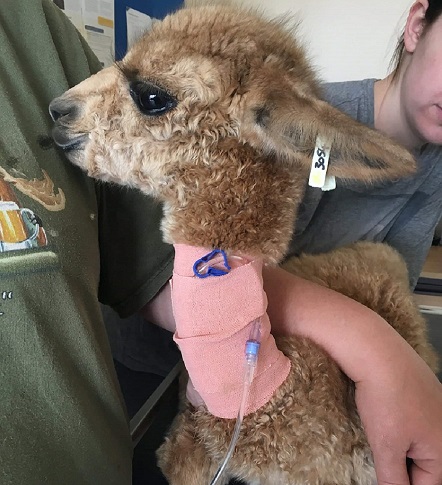We performed our first plasma transfusion of 2019 earlier in the week. Happily, this one was in a cria that was not yet showing any signs of illness other than failure to gain weight, but was identified as having an IgG level of 300mg/dl (ideally it should be 1000+). The plasma transfusion should prevent the cria from deteriorating into sepsis.
The owner checked the cria’s IgG as they were not happy with its weight gain (it had lost since birth). Proactive IgG testing is much better for the cria as a plasma transfusion can prevent it from becoming ill and potentially dying. It is also far less costly, from an economics point of view: a sick cria could cost over £1,000 in vet bills and you could lose the potential value of the adult animal if it dies.
Which crias should you check IgG status on?
- Any that have struggled to nurse sufficiently during the crucial first 24 hours of life, or not got going with nursing until 4-6 hours old [this also includes poor mothering by the dam]
- Any cria of low birth weight (<7kg is a good rule of thumb for alpacas)
- Premature crias
- Any cria born following a difficult birthing (including C-section)
- Any cria that fails to gain weight or loses weight: weigh crias daily for the first 1-2 weeks ideally. They lose a bit in the first 24 hours due to drying out and passing meconium but should be bright/alert, and after that should gain consistently
- Any cria that is just not doing right should have a vet exam to rule out congenital defects and consider failure of passive transfer (FPT) and sepsis
- Any high value (or emotional value!) cria.
Find out more about our cria IgG testing service

